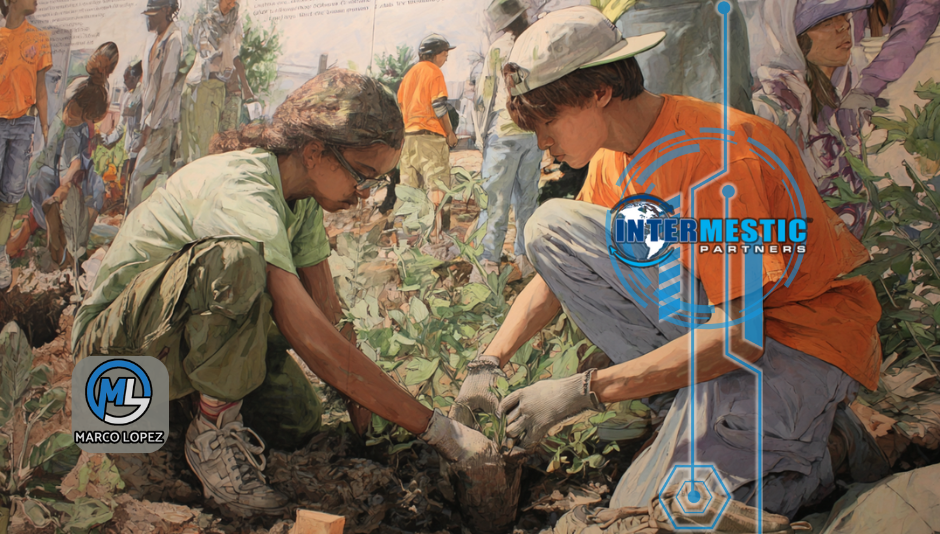Global Infrastructure Investment: Harnessing Foreign Capital for Sustainable Economic Growth
- Marco Lopez

- Jan 8, 2024
- 4 min read

Introduction
Renewed infrastructure initiatives are taking center stage globally as countries identify the crucial role of infrastructure in economic growth and competitiveness. Foreign capital plays a significant role in financing these infrastructure projects, catering to the continually diversifying investment needs arising from factors such as population growth, urbanization, and technological advancements.
Infrastructure Investment Needs
Several countries are dealing with considerable infrastructure investment needs, spanning fields like transport systems, energy networks, water supplies, sanitation facilities, telecommunication services, and digital infrastructure. For instance, reports indicate that a cumulative global investment of $79 trillion is required by 2040 to sustain global growth predictions. The challenge lies not only in addressing the ever-growing needs resulting from elements such as population growth and technological advancements but also in replacing or renovating the aging infrastructure of the developed world. Renewed infrastructure initiatives undertake these challenges to provide a solid foundation for sustainable economic development.
Government Commitment and Policy Support
In light of the monumental task at hand, governments worldwide are renewing their commitment to infrastructure development. They are using policy-making as a tool to attract the necessary investment. This includes measures such as streamlining the regulatory processes, offering incentives for private sector participation, establishing infrastructure funds, and generating favorable investment conditions. Information about various countries’ infrastructure initiatives can be found in the Infrastructure 100: World Markets Report produced by KPMG. In addition to these measures, governments are also prioritizing infrastructure projects having sustainable and resilient properties to address concerns related to climate change and environmental sustainability.
Public-Private Partnerships (PPPs)
Behind the increasing momentum in infrastructure development is the key financing model of public-private partnerships. PPPs bring together the public sector and private investors, pooling their respective resources to finance, develop, operate, and maintain infrastructure assets. In this arrangement, foreign capital plays a unique role. International investors not only bring invaluable financial resources but also contribute technical expertise and introduce innovative solutions to infrastructure projects.
Infrastructure as an Asset Class
Infrastructure investments are earning recognition as a distinct asset class, offering steady, long-term returns, and aiding diversification. According to the World Economic Forum, pension funds, sovereign wealth funds, and infrastructure funds have been allocating significant capital to support infrastructure projects. Foreign investors, in particular, are drawn to infrastructure assets due to their potential to produce steady cash flows, protect against inflation, and show resilience to economic cycles.
Infrastructure Investment Vehicles
There exists a variety of investment outlets that make foreign capital participation in infrastructure projects possible. These include infrastructure funds, Infrastructure Investment Trusts (InvITs), infrastructure bonds, and infrastructure-focused private equity funds. Such vehicles, serve as platforms for foreign investors to inject capital into a vast array of infrastructure projects across sectors and geographies.
The Role of Multilateral Development Banks in Infrastructure Development
Multilateral Development Banks (MDBs) such as the World Bank, Asian Development Bank, and European Bank for Reconstruction and Development act as instrumental catalysts in mobilizing foreign capital for infrastructure development. These organizations offer financing, technical assistance, and risk mitigation tools to back infrastructure projects, especially in emerging markets. Notably, MDBs also facilitate knowledge exchange, capacity building, and policy dialogue, fostering a healthy environment for sustainable infrastructure investment.
Infrastructure Investment Opportunities
Renewed infrastructure initiatives create a broad spectrum of investment opportunities for foreign capital. Using vehicles like greenfield projects, brownfield projects, privatizations, concessions, and infrastructure-related services, foreign investors can make substantial contributions to global development. Sectors such as renewable energy, transportation, water and sanitation, digital infrastructure, and social infrastructure (healthcare and education) offer compelling investment opportunities.
ESG Considerations in Infrastructure Investment
Foreign investors are increasingly taking Environmental, Social, and Governance (ESG) considerations into account when making infrastructure investment decisions. Embedding principles of sustainability, climate resilience, social impacts, and governance into their portfolios not only aids in risk mitigation but also assists in realizing long-term value. The United Nations Conference on Trade and Development outlines how ESG considerations can be integrated into investment strategies and policies to induce strong ESG performance.
Infrastructure Investment Risks
However, foreign investors must be mindful of the various risks associated with infrastructure investments. These include regulatory and political risks, construction and operational risks, currency and exchange rate risks, and revenue, and cash-flow risks. As per the guide by the Organisation for Economic Co-operation and Development, it is vital to conduct thorough due diligence, assess risk mitigation strategies, and partner with experienced local entities to successfully navigate these risks.
International Collaboration and Partnerships
Often, infrastructure initiatives necessitate international collaboration and partnerships to effectively attract and mobilize foreign capital. Governments, international organizations, development finance institutions, and private sector entities must work together to facilitate infrastructure investment, share best practices, and propel knowledge exchange. Such collaborations, as witnessed by the initiatives of the European Bank for Reconstruction and Development, improve the efficiency and scope of infrastructure initiatives.
Conclusion
Renewed infrastructure initiatives significantly open up opportunities for foreign capital to contribute to global infrastructure. The interplay of several factors - governments' commitment, policy support, PPPs, recognition of infrastructure as an asset class, and investment vehicles, to name a few, shape the role of foreign capital in infrastructure investment. As the world marches towards a brighter, sustainable future, these factors will continue to guide and evolve the infrastructure landscape. At this juncture, the expertise of Intermestic Partners, renowned for their deep insights and innovative approaches to international investment, becomes invaluable. We invite readers seeking to navigate this complex yet rewarding field to reach out to Intermestic Partners. Their proficiency in aligning investment strategies with sustainable and profitable outcomes makes them ideal collaborators for anyone looking to make an impact in this evolving sector.
.png)




Investing in infrastructure is key to economic growth, and this applies to residential properties as well. When disaster strikes, Insurance Reconstruction Services in Chesterfield help homeowners recover efficiently, contributing to community stability.
Just as smart investments drive economic growth, strategic home renovations increase property value and efficiency. Our House Renovation Services in Broomall ensure homeowners maximize their investments by enhancing both beauty and functionality.